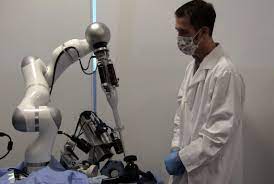Uses Of Computer Science In Electronic
Medical Records (EMR)
Electronic
medical records (EMR) are a key application of computer science in the medical
field. EMRs are digital versions of the paper medical records that have been
traditionally used by healthcare providers. They enable healthcare providers to
store, manage, and access patient information electronically, thus providing a
more efficient and effective way of managing patient data.
One of
the primary benefits of EMRs is that they enable healthcare providers to access
patient information quickly and easily. This is particularly important in
emergency situations, where seconds can mean the difference between life and
death. EMRs also allow for more accurate and complete patient information,
which can lead to better diagnosis and treatment.
Another
key benefit of EMRs is that they enable healthcare providers to share patient
information electronically. This is particularly important in cases where
patients are being treated by multiple healthcare providers, such as in the
case of chronic diseases. EMRs also enable healthcare providers to share
patient information with other healthcare providers, such as specialists and
consultants.
EMRs
also enable healthcare providers to track patient information over time. This
is particularly important in the case of chronic diseases, where tracking
patient information over time can provide valuable insights into the
progression of the disease. EMRs also enable healthcare providers to track
patient information over time, which can help to identify trends and patterns
in patient health.
One of
the key challenges of EMRs is ensuring the security and privacy of patient
information. This is particularly important in light of the increasing number
of cyber attacks on healthcare organizations. Computer science plays a critical
role in ensuring the security and privacy of EMRs, by developing and
implementing security protocols, such as encryption and authentication.
Another
key challenge of EMRs is ensuring their interoperability, so that different EMR
systems can communicate and share information with one another. This is
particularly important in the case of patients who are being treated by
multiple healthcare providers, as well as in the case of patients who are being
transferred from one healthcare facility to another. Computer science plays a
critical role in ensuring the interoperability of EMRs, by developing and
implementing standards for data exchange and by developing and implementing
interfaces that enable different EMR systems to communicate with one another.
EMRs
also enable healthcare providers to improve the quality of care, by providing
decision support systems that help healthcare providers to make more informed
decisions. Decision support systems use algorithms and data analysis to provide
healthcare providers with information that can help them to make more informed
decisions. This can include information on the best treatment options, the most
appropriate medications, and the most appropriate diagnostic tests.
EMRs
also enable healthcare providers to improve the efficiency of care, by
providing automated tools that help healthcare providers to manage patient
information more efficiently. This can include tools that help healthcare
providers to manage patient schedules, tools that help healthcare providers to
manage patient medications, and tools that help healthcare providers to manage
patient lab results.
In
conclusion, Electronic medical records (EMRs) are a key application of computer
science in the medical field. They provide a more efficient and effective way
of managing patient data, and enable healthcare providers to access patient
information quickly and easily. EMRs also enable healthcare providers to share
patient information electronically, which can lead to better diagnosis and
treatment. Additionally, EMRs enable healthcare providers to track patient
information over time, which can help to identify trends and patterns in
patient health. However, there are also challenges such as ensuring the
security and privacy of patient information and interoperability of different
EMR systems. Computer science plays a critical role in addressing these
challenges by developing and implementing security protocols and standards for
data exchange, as well as developing and implementing interfaces that enable
different EMR systems to communicate with one another.
.jpeg)
.jpeg)


Comments
Post a Comment